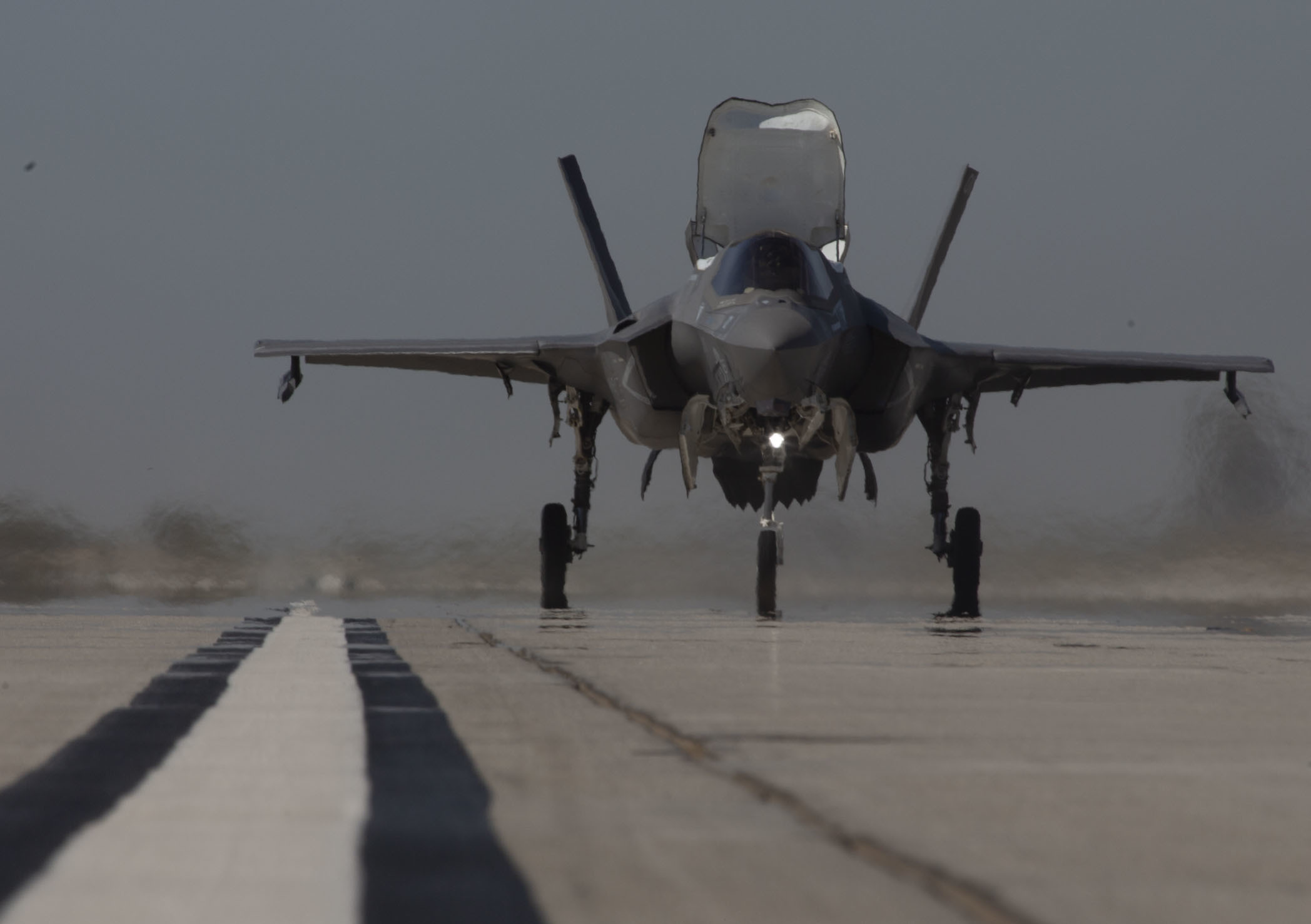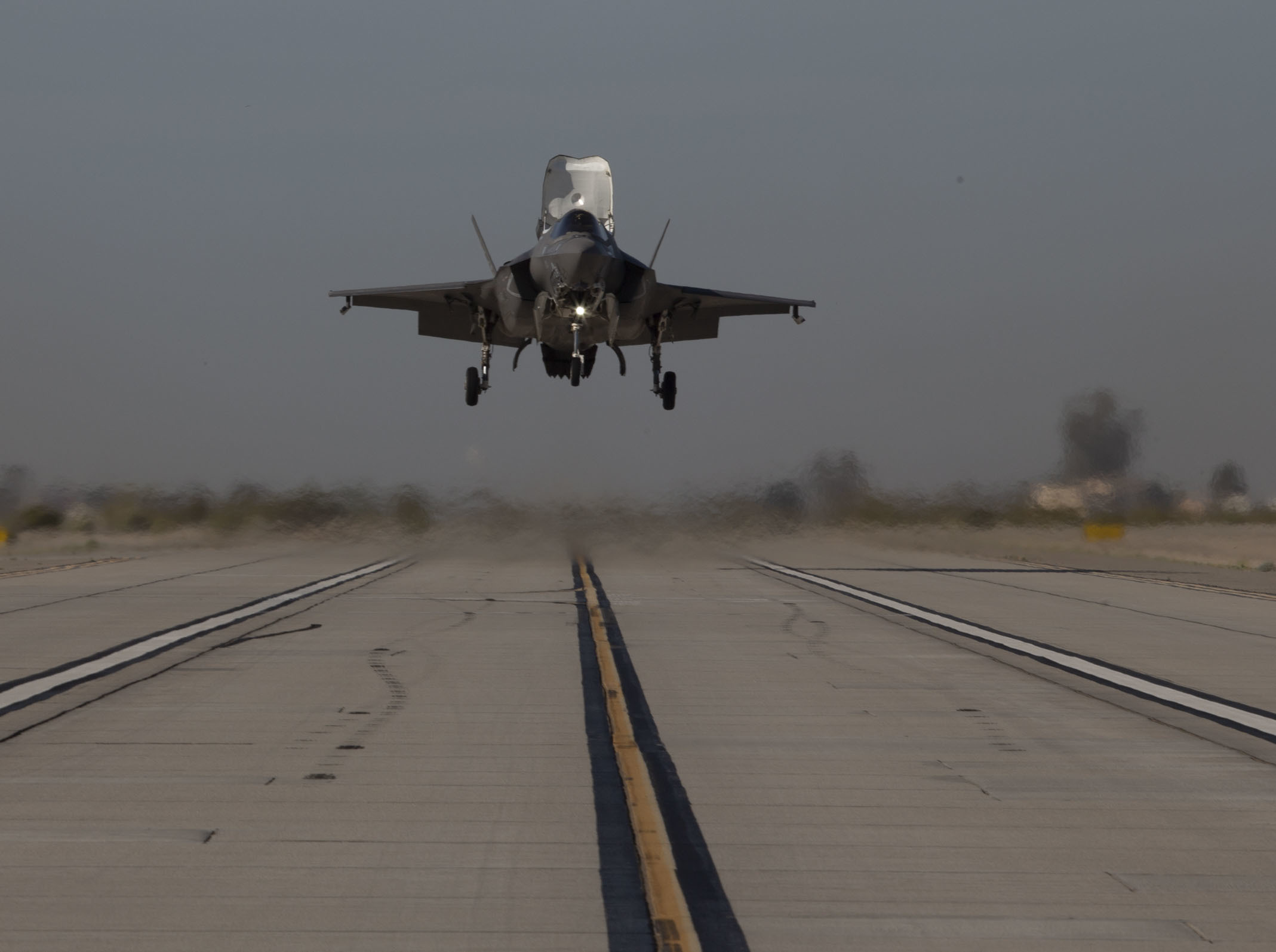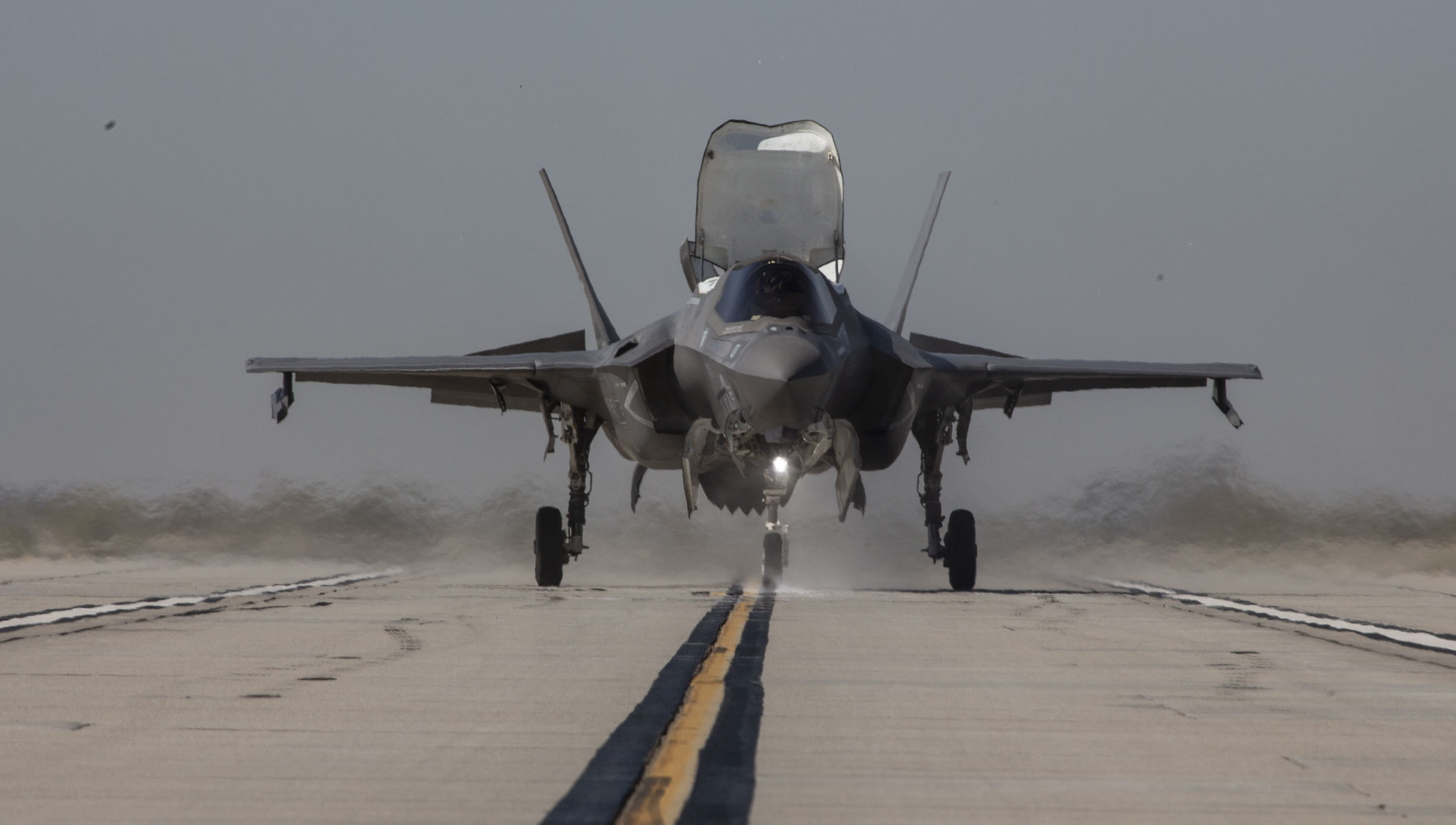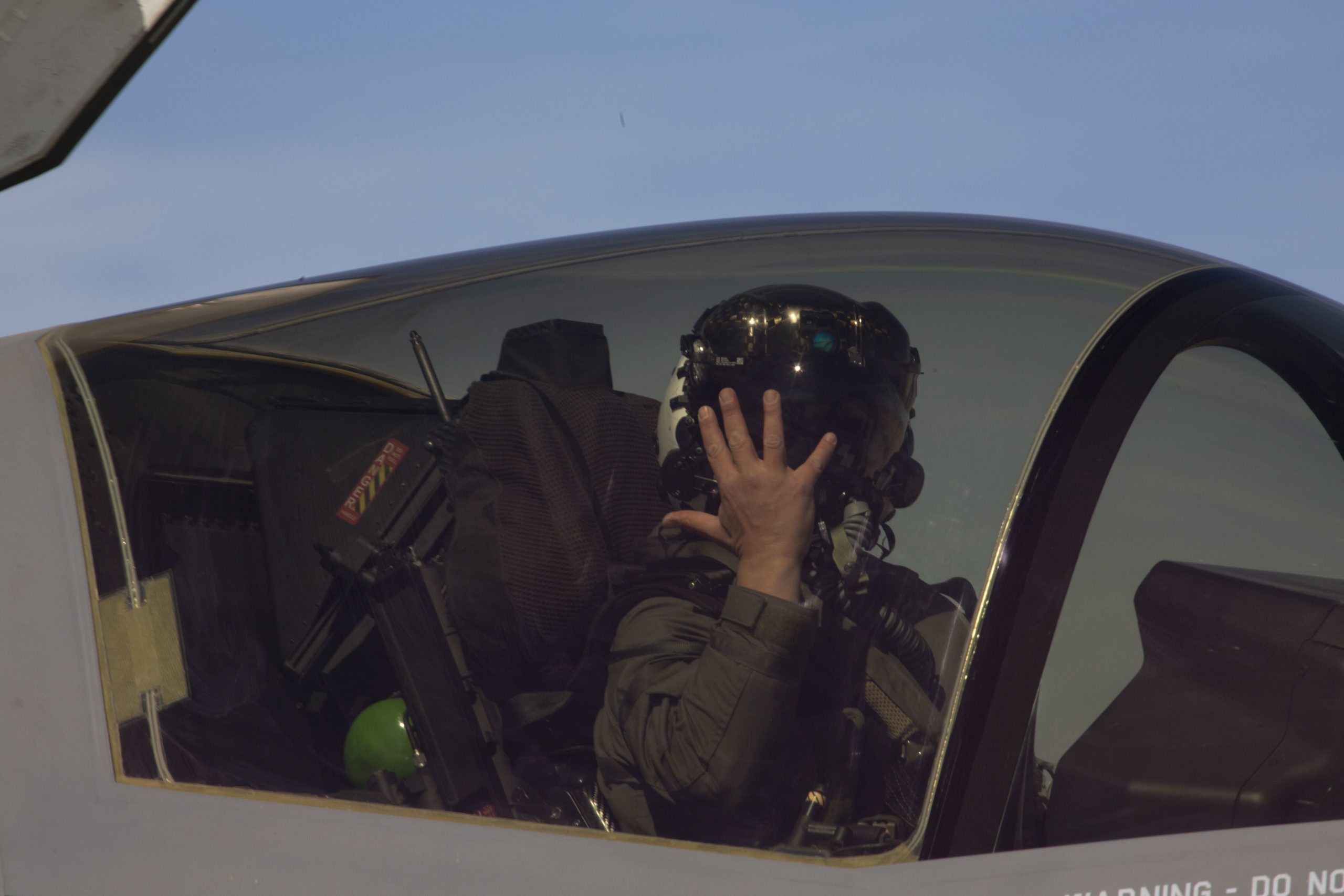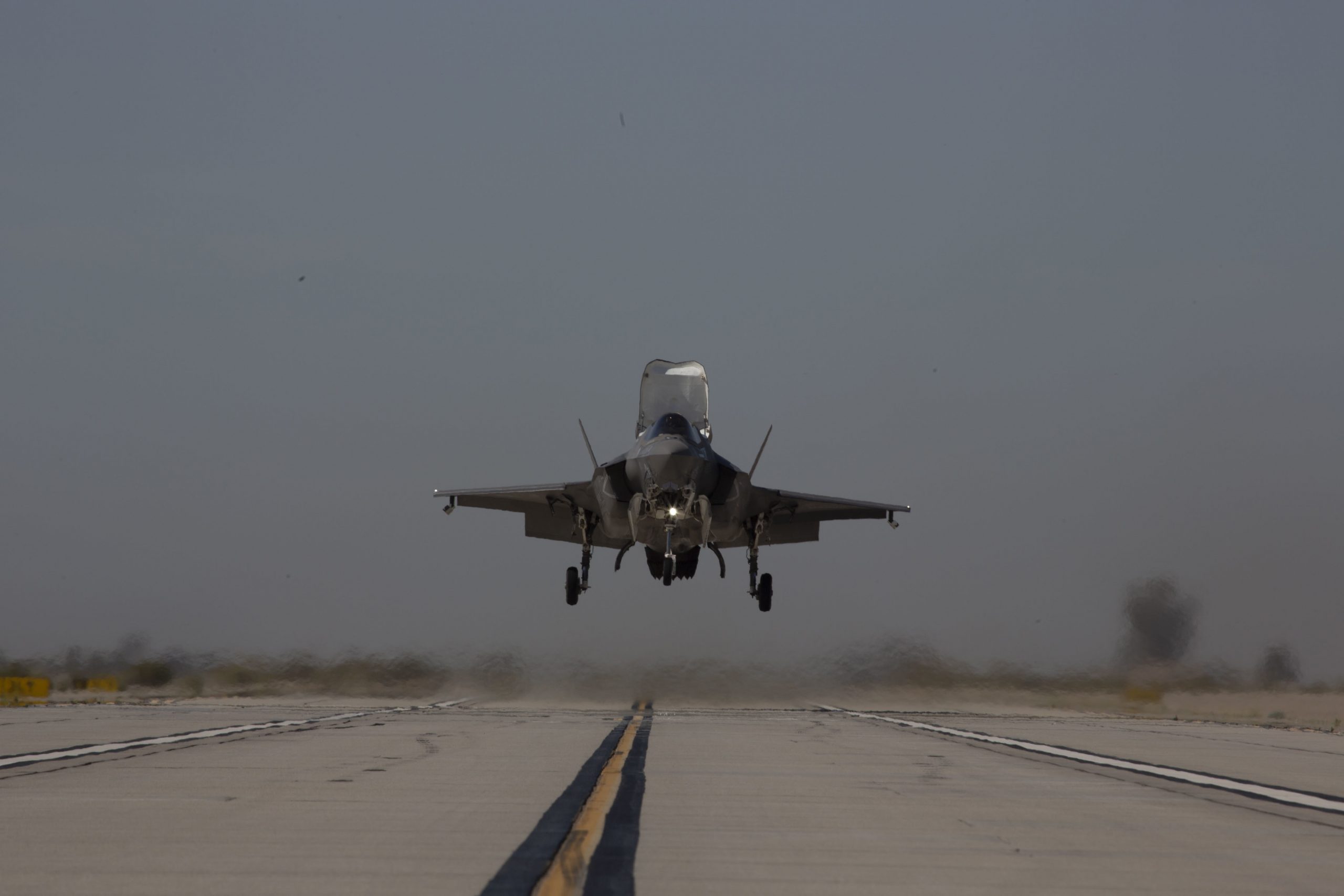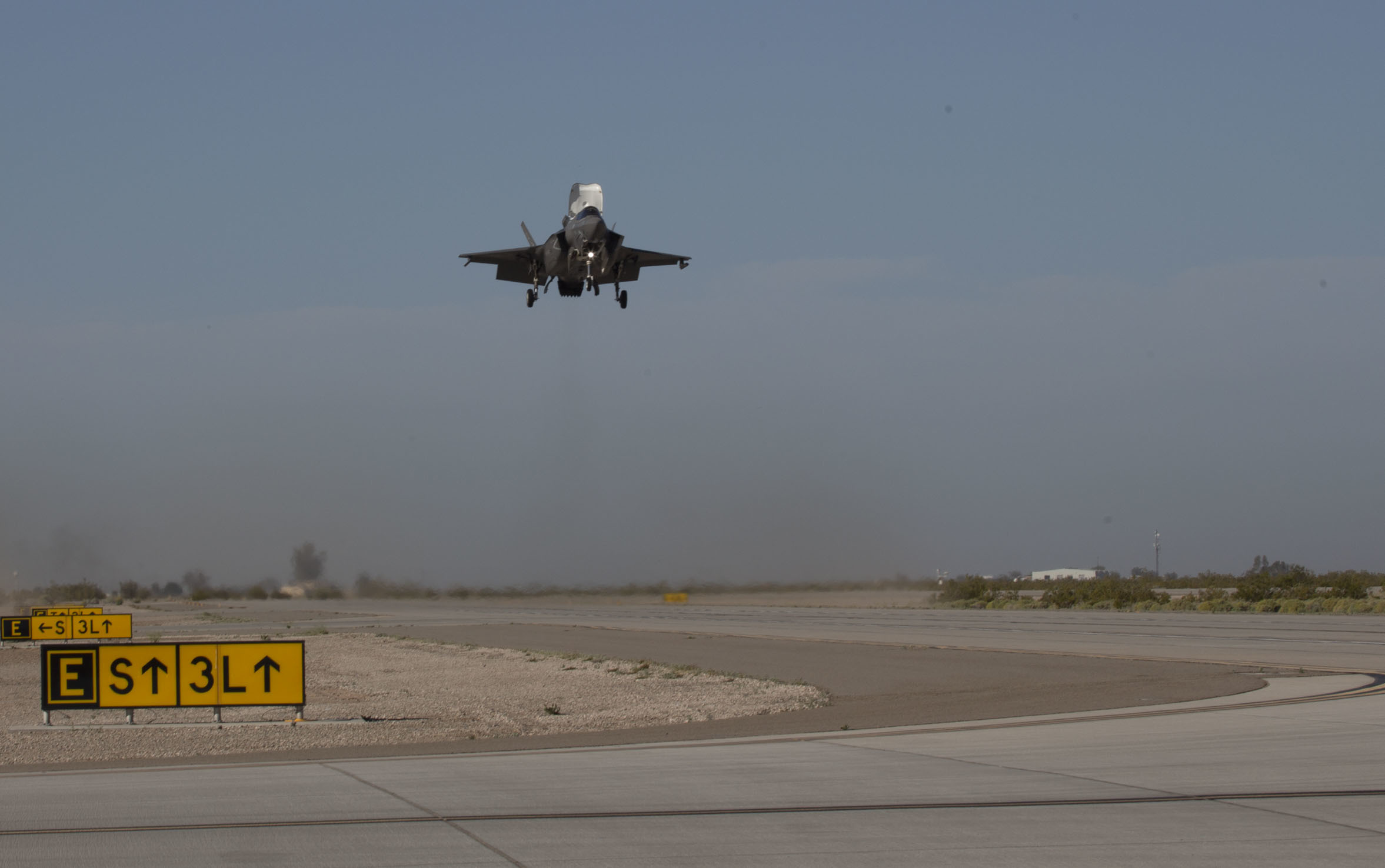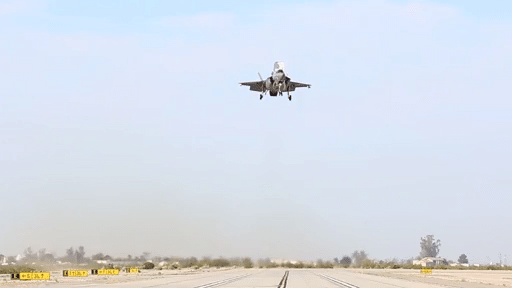
Multiple F-35B Lightning II’s with Marine Fighter Attack Squadron (VMFA) 122, Marine Aircraft Group 13, 3rd Marine Aircraft Wing, conduct vertical landings at Marine Corps Air Station Yuma, Arizona, April 6, 2021. 3rd MAW and I Marine Expeditionary Force continue to pave the road for the rest of the Marine Corps by providing relevant training with real-world applications to develop recognition primed decision making in preparation for future conflicts.
And the photos in the slideshow below show the Marines working narrow road expeditionary landing training at MCAS Yuma.
During a visit with the Marines last year in at Yuma MCAS, the role of the F-35 in the evolving force capabilities of the Marines as a full spectrum crisis management force was highlighted.
Specifically, during my visit to MAWTS-1 in September 2020, we focused on two core questions:
How is the Marine Corps going to contribute most effectively to the Pacific mission in terms of Sea Control and Sea Denial?
And how to best contribute to the defensive and offensive operations affecting the SLOCs?
Prior to my visit, I discussed the mobile basing piece with Major Brian “Flubes” Hansell, MAWTS-1 F-35 Division Head. A key aspect of what we discussed was the capability which the F-35 to both empower their expeditionary bases as well as contributing to the wider integration in the fleet approach being worked.
As Major Hansell put it: “By being an expeditionary, forward-based service, we’re effectively extending the bounds of the kill web for the entire joint and coalition force.”
During the visit, I continued the discussion first with the Col Gillette, CO of MAWTS-1, an experienced F-35 pilot, whom I first met at Eglin AFB who then returned to YUMA and transitioned in the first F-35 operational squadron deployed to Japan.
My colleague Ed Timperlake once characterized the coming of the F-35 global enterprise, or the ability of a wide range of U.S. service and allied air forces to integrated together over the extended combat space as the 21st century “big blue blanket.”
The “big blue blanket” for the US Navy in World War II referred to the very large fleet deployed throughout the Pacific to deal with the tyranny of distance.
Such a fleet does not exist today, nor will it. Airpower is the key to shaping today’s “big blue blanket,” with the F-35 global enterprise as a key enabler.
As Col. Gillette put it: “It is not only a question of interoperability among the F-35 fleet, it is the ability to have common logistical and support in the region with your allies, flying the same aircraft with the same parts. And the big opportunity comes with regard to the information point I made earlier. We are in the early stages of exploiting what the F-35 force can provide in terms of information dominance in the Pacific, but the foundation has been laid.
“And when we highlight the F-35 as the 21st century version of what the World War II Navy called the big blue blanket with the redundancy and the amount of information that could be utilized, it’s pretty astonishing if you think about it.
“The challenge is to work the best ways to sort through the information resident in the F-35 force and then how do you utilize it in an effective and efficient way for the joint force. But the foundation is clearly there.
For the discussions during this visit as well as other warfighting centers in the United States during 2020, see the following:


